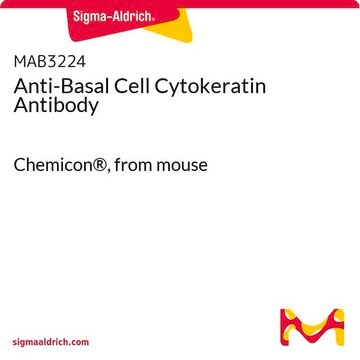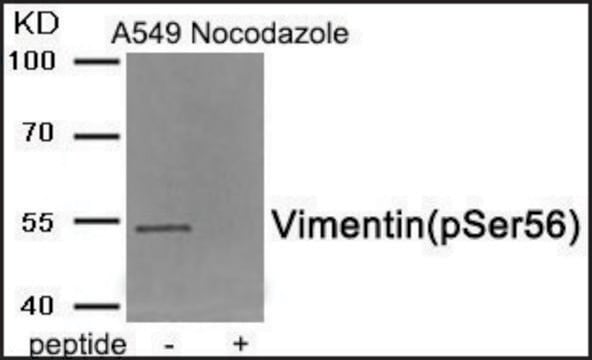SAB4200761
Anti-Vimentin antibody, Mouse monoclonal

clone LN-6, purified from hybridoma cell culture
Sinónimos:
Anti-VIM
About This Item
Productos recomendados
origen biológico
mouse
Nivel de calidad
forma del anticuerpo
purified from hybridoma cell culture
tipo de anticuerpo
primary antibodies
clon
LN-6, monoclonal
formulario
buffered aqueous solution
mol peso
~58 kDa
reactividad de especies
rat, human, porcine, monkey, bovine, canine, mouse, rabbit, hamster
validación mejorada
independent
Learn more about Antibody Enhanced Validation
concentración
~1 mg/mL
técnicas
flow cytometry: suitable
immunoblotting: 0.25-0.5 μg/mL using human foreskin fibroblast Hs68 cell line.
immunofluorescence: 1-2 μg/mL using human foreskin fibroblast Hs68 cell line.
immunohistochemistry: 5-10 μg/mL using Human breast carcinoma sections.
immunoprecipitation (IP): suitable
isotipo
IgM
Nº de acceso UniProt
Condiciones de envío
dry ice
temp. de almacenamiento
−20°C
modificación del objetivo postraduccional
unmodified
Información sobre el gen
bovine ... Vim(280955)
dog ... Vim(477991)
hamster ... Vim(100689099)
human ... VIM(7431)
mouse ... Vim(22352)
pig ... Vim(100522394)
rabbit ... Vim(100008924)
rat ... Vim(81818)
rhesus monkey ... Vim(705289)
Descripción general
Especificidad
Inmunógeno
Aplicación
- immunoblotting
- immunofluorescence
- flow cytometry
- immunoprecipitation
- immunohistochemistry
Acciones bioquímicas o fisiológicas
Forma física
Almacenamiento y estabilidad
Cláusula de descargo de responsabilidad
Not finding the right product?
Try our Herramienta de selección de productos.
Código de clase de almacenamiento
10 - Combustible liquids
Clase de riesgo para el agua (WGK)
WGK 3
Punto de inflamabilidad (°F)
Not applicable
Punto de inflamabilidad (°C)
Not applicable
Certificados de análisis (COA)
Busque Certificados de análisis (COA) introduciendo el número de lote del producto. Los números de lote se encuentran en la etiqueta del producto después de las palabras «Lot» o «Batch»
¿Ya tiene este producto?
Encuentre la documentación para los productos que ha comprado recientemente en la Biblioteca de documentos.
Nuestro equipo de científicos tiene experiencia en todas las áreas de investigación: Ciencias de la vida, Ciencia de los materiales, Síntesis química, Cromatografía, Analítica y muchas otras.
Póngase en contacto con el Servicio técnico








